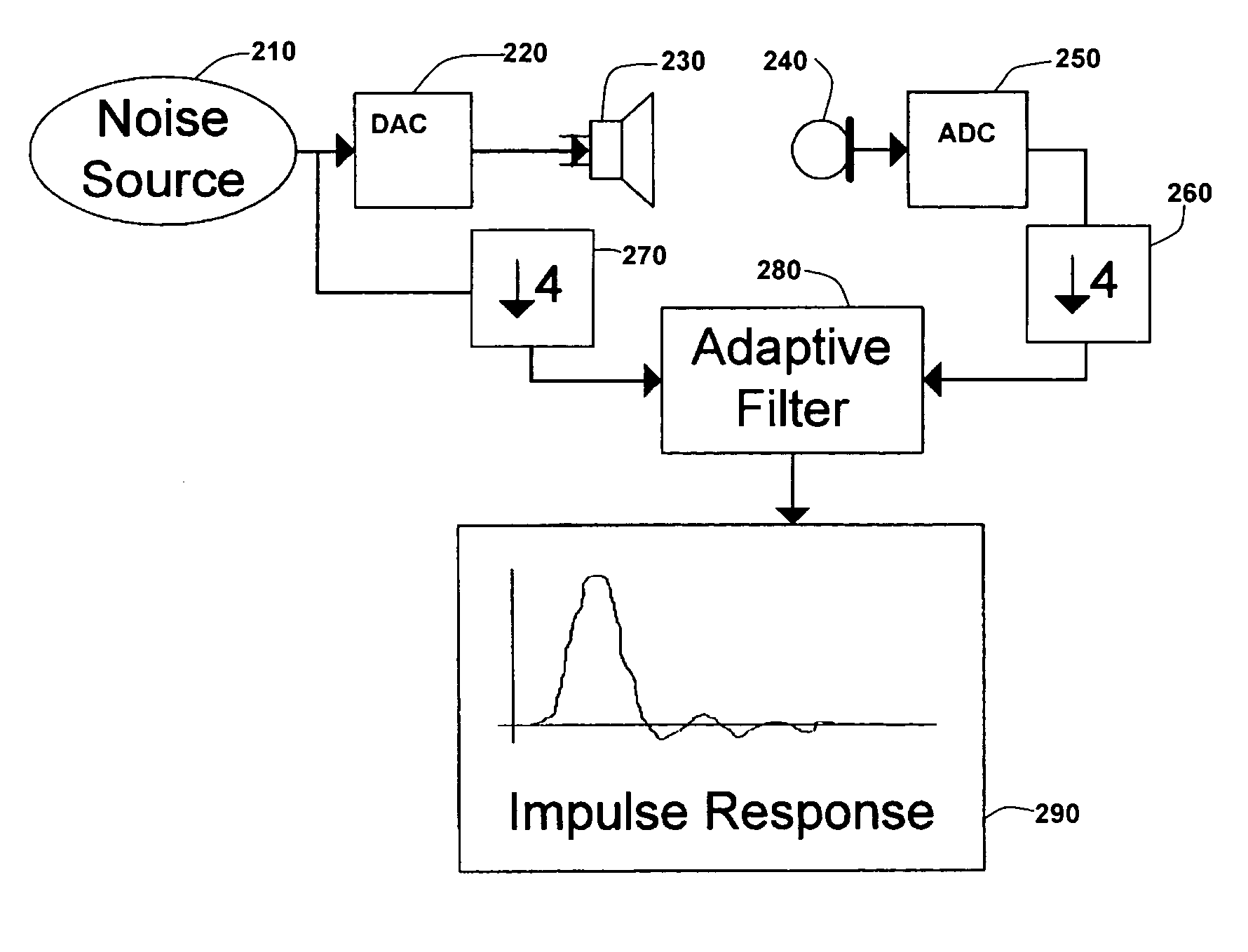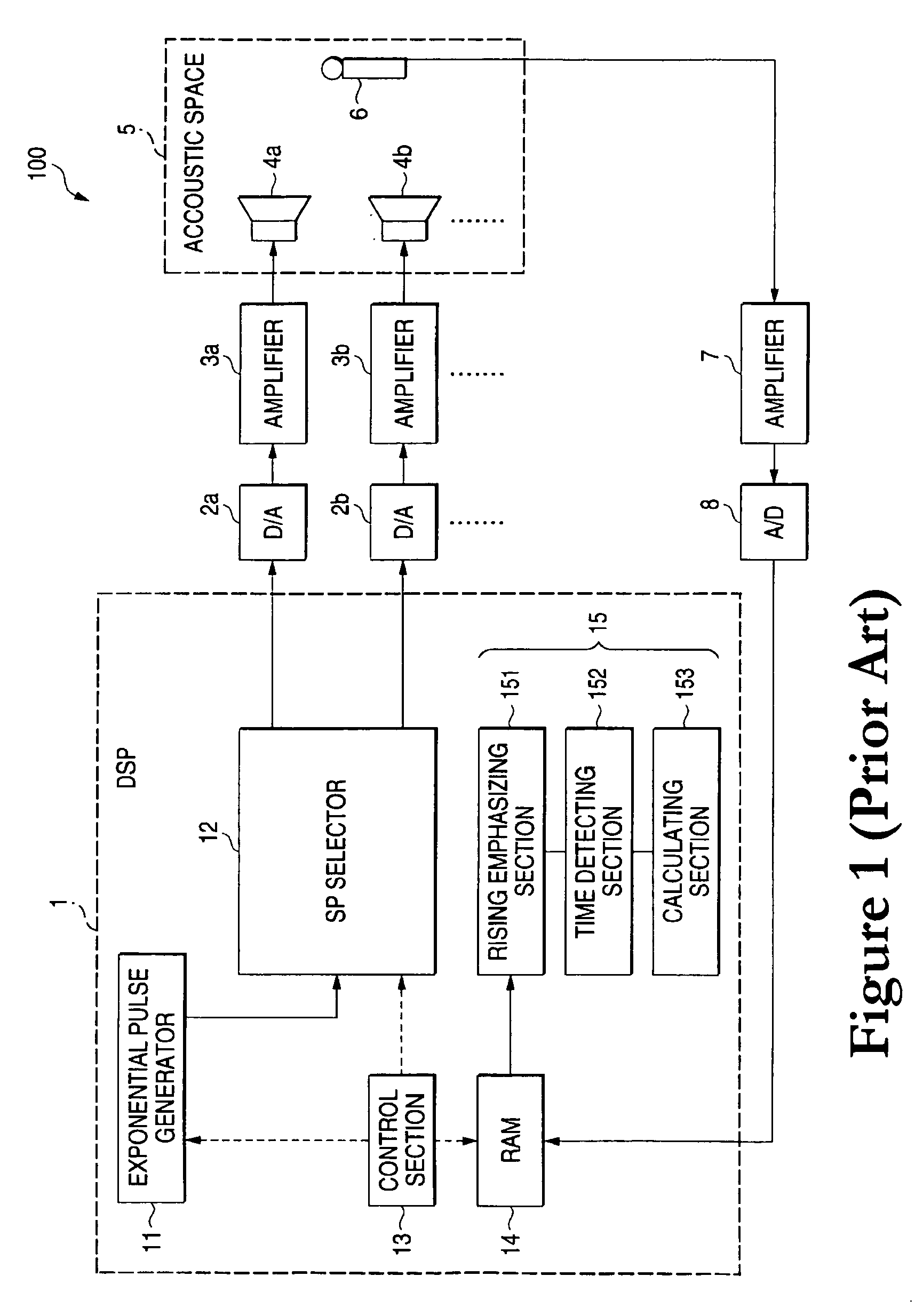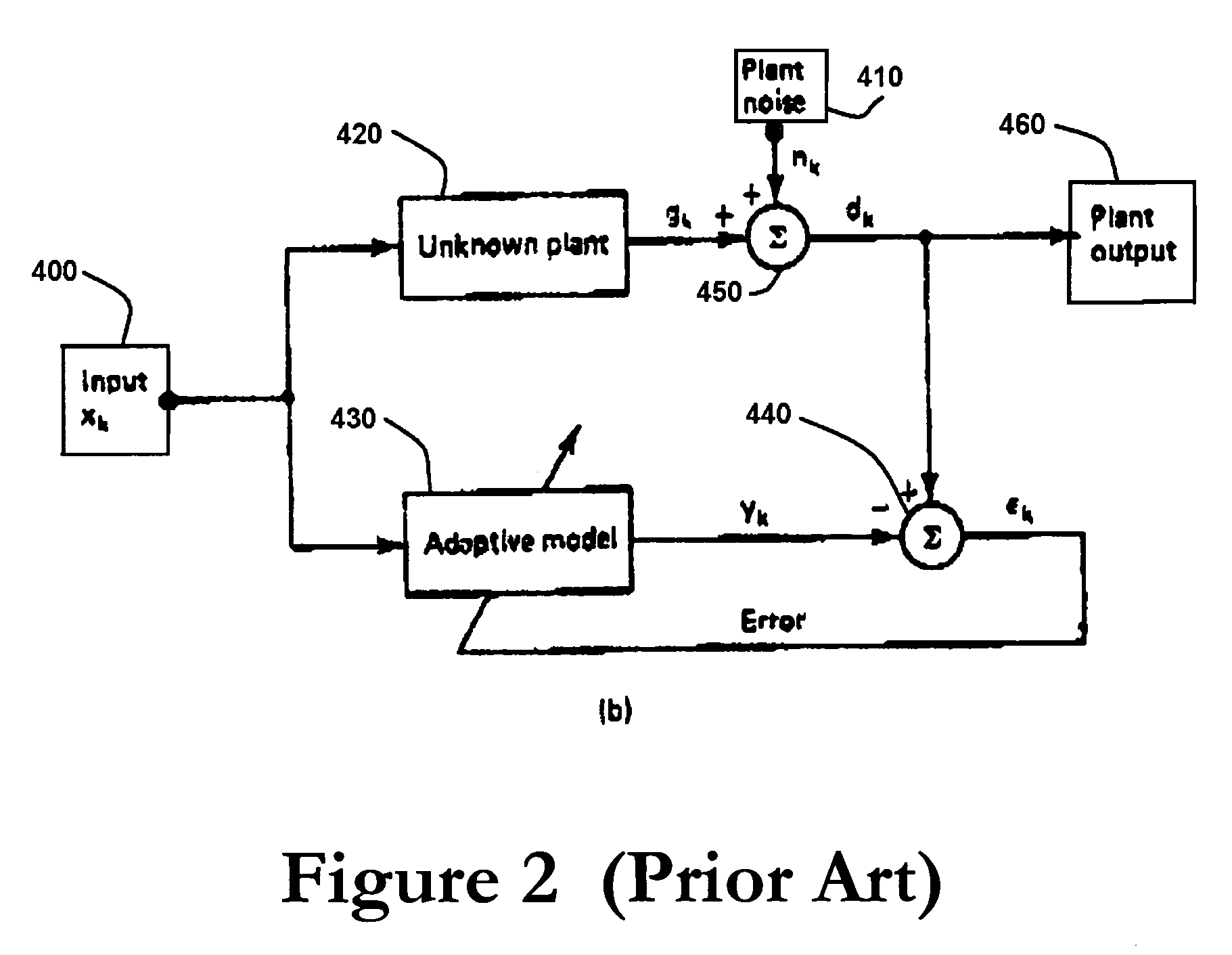Speaker distance measurement using downsampled adaptive filter
a technology of adaptive filter and speaker distance measurement, which is applied in the direction of stereophonic circuit arrangement, instruments, computing, etc., can solve the problems of affecting so as to improve the range of measurement, improve the quality of home theater system, and reduce the risk of nois
- Summary
- Abstract
- Description
- Claims
- Application Information
AI Technical Summary
Benefits of technology
Problems solved by technology
Method used
Image
Examples
Embodiment Construction
[0039] In the system of FIG. 2, the unknown plant refers to a general electrical system or circuit. The plant noise refers to any general intervening noise of such a plant. Applying the system of FIG. 2 to the problem of home theater calibration, the “unknown plant”420 would, in this application, comprise the response of the room and speaker(s), and the “plant noise”410 is any noise in the room (A / C, refrigerator, speech, and / or other background noise). The use of an adaptive filter for home theater calibration may make such calibration less sensitive to background interference and thus not require absolute quietness in the room for the consumer in order to perform the calibration.
[0040]FIG. 3 is a block diagram of the apparatus of the present invention employing an adaptive filter for home theater calibration. For the sake of simplicity, many of the basic components in an auto-setup home theater system are not illustrated here. Referring to FIG. 3, a noise source 210 may be used t...
PUM
 Login to View More
Login to View More Abstract
Description
Claims
Application Information
 Login to View More
Login to View More - R&D
- Intellectual Property
- Life Sciences
- Materials
- Tech Scout
- Unparalleled Data Quality
- Higher Quality Content
- 60% Fewer Hallucinations
Browse by: Latest US Patents, China's latest patents, Technical Efficacy Thesaurus, Application Domain, Technology Topic, Popular Technical Reports.
© 2025 PatSnap. All rights reserved.Legal|Privacy policy|Modern Slavery Act Transparency Statement|Sitemap|About US| Contact US: help@patsnap.com



